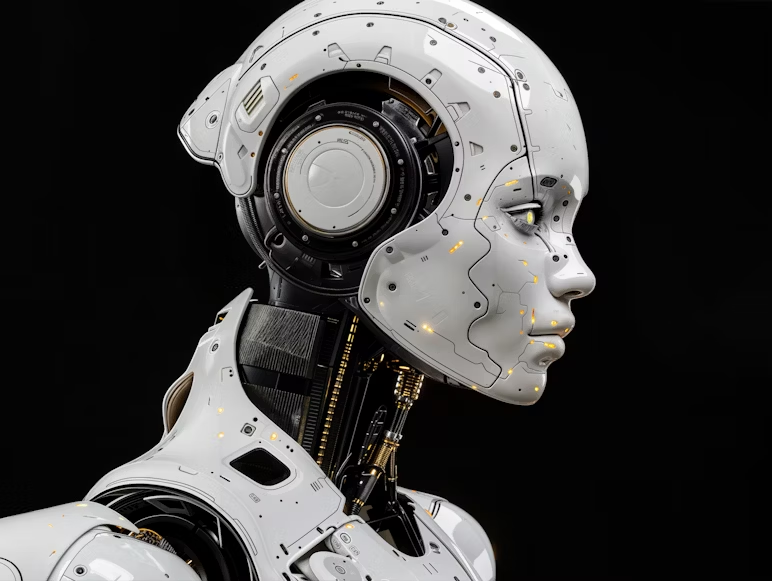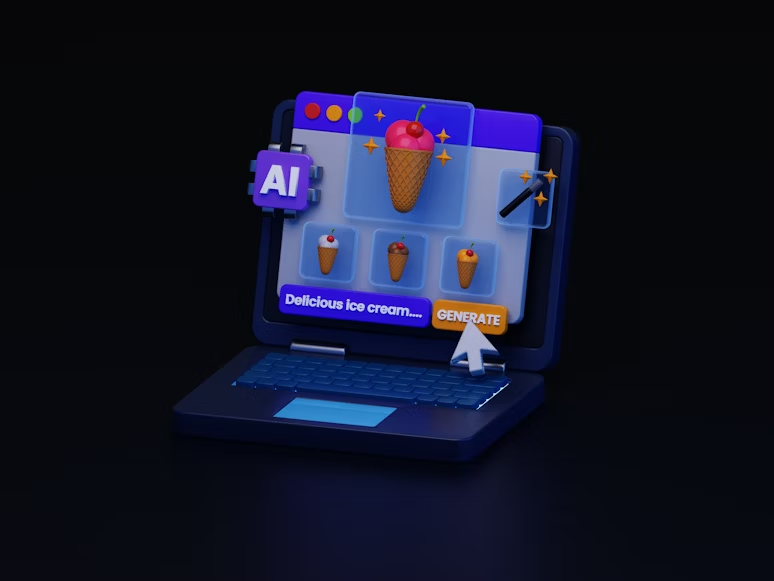The field of deep learning in artificial intelligence (AI) has expanded significantly in recent years, and deep learning is one of the most potent subfields propelling this development. Deep learning processes data and generates patterns that are utilised in decision-making by simulating the neural networks seen in the human brain. Deep learning is the foundation of modern intelligent systems, ranging from facial recognition to self-driving cars. In this piece, we examine deep learning’s definition, operation, architecture, uses, benefits, drawbacks, and prospects.
What is deep learning?
Machine learning, a subfield of artificial intelligence, includes deep learning. It uses artificial neural networks (ANNs), which are algorithms modelled after the composition and operations of the human brain. These networks are made to “learn” from vast volumes of data by simulating the behaviour of the human brain, albeit very different from its true capabilities.
Deep learning learns features directly from raw data, automating the manual feature extraction procedure needed for traditional machine learning. Because of this, it is particularly helpful when working with unstructured data, including text, audio, and photos.
How Deep Learning Works
Neural networks with numerous layers are at the heart of deep learning, hence the word “deep”. Among these layers are:
Input layer: Gets the information.
Hidden layers: Learn features and carry out calculations.
The output layer generates the final categorisation or prediction.
Output layer: Neurones or nodes in each layer process input from the layer above, apply weights, biases, and an activation function, and then send the results to the layer below.

Both forward propagation—where input travels through the network—and back propagation—where mistakes are transmitted back through the network to update weights—are used in the training of deep learning models. Stochastic Gradient Descent (SGD) and other optimisation methods are used to iterate over training data, improving the model over time.
Key Components of Deep Learning
- Artificial Neural Networks (ANNs): These are the building blocks of deep learning models and are intended to mimic the neural network function of the human brain.
- Convolutional Neural Networks (CNNs): CNNs process data using layers that identify patterns like edges, textures, and forms. CNNs are mostly employed in image identification and video analysis.
3. RNNs, or recurrent neural networks: RNNs are useful for sequential data, such as language or time series, since they contain memory cells that retain the results of earlier calculations.
- Long Short-Term Memory (LSTM): An RNN type that is helpful for language modelling and speech recognition because it can identify long-range dependencies in sequences.
- Unsupervised learning networks: Called autoencoders, they seek to reduce input to a smaller representation before reconstructing it.
6. Generative Adversarial Networks (GANs): These networks, which are made up of a discriminator and a generator, compete with one another to create synthetic data that is realistic.
Applications of Deep Learning
Many of the smart technologies we use on a daily basis are powered by deep learning. Here are a few well-known uses:
1. Computer Vision
Medical imaging diagnostics, image classification, facial recognition, and object identification all make use of deep learning models.
2. Natural Language Processing (NLP)
Text production, chatbots, sentiment analysis, language translation, and speech recognition all depend on deep learning.
3. Autonomous Vehicles
Deep learning is used by Tesla, Waymo, and other self-driving cars to recognise objects, recognise lanes, detect pedestrians, and make decisions in real time.
4. Healthcare
Predictive analytics, personalised medicine, drug discovery, and diagnostics all make use of deep learning. CNNs, for instance, are able to identify tumours in radiological images.
5. Finance
Deep learning offers excellent accuracy and the capacity to identify minute patterns in intricate datasets for credit scoring, algorithmic trading, and fraud detection.
6. Entertainment and Media
Deep learning algorithms that examine user preferences and behaviour power the recommendation engines used by YouTube, Spotify, and Netflix.
Benefits of Deep Learning
Automatic Feature Extraction: Deep learning models develop the optimal features on their own, eliminating the requirement for human feature building.

Scalability: Exceptionally effective with massive amounts of data.
High Accuracy: Deep learning has outperformed humans in picture and speech recognition tests in particular.
Continuous Learning: These models continue to get better over time when given enough data
Challenges of Deep Learning
Deep learning still faces a number of obstacles in spite of its achievements:
1. Data Requirement
Large volumes of labelled data are necessary for deep learning models, but obtaining them can be costly and time-consuming.
2. Computational Power
Deep network training uses a lot of resources and frequently calls for GPUs or TPUs
4. Overfitting
Model Complexity and Performance
- Overcomplicated models may memorise.
- Overcomplicated models may not generalise.
- Subpar performance on unknown data.
5. Bias and Fairness
“Biassed Training Data Replication”
- Potential for unethical results.
- Replicating biases.
Future of Deep Learning
Deep learning has a bright future and is still developing:
·
Explainable AI (XAI): The goal of explainable AI (XAI) is to increase the transparency and interoperability of deep learning models.
Federated Learning: A method that preserves data privacy while training models across dispersed devices.
Edge Computing: To lessen reliance on the cloud, models are being tuned to operate on edge devices like smartphones.
Neuro-symbolic AI: To create more intelligent systems, neuro-symbolic AI combines the strength of symbolic reasoning and deep learning.
Zero-shot and few-shot learning: Building models that can generalise from a small number of examples is the goal of zero-shot and few-shot learning, which lessens the requirement for large datasets.




